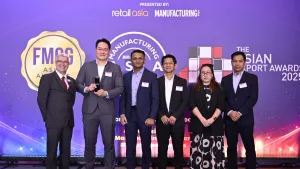APAC warehouses accelerate AI adoption to tackle safety gaps
79% of warehouse associates say safety is a top concern.
Safety concerns and labor pressures are rising in warehouse operations across Asia Pacific, and 63% of warehouse leaders plan to adopt artificial intelligence (AI) within five years to address these challenges, according to Zebra Technologies’ latest Warehouse Vision Study.
“Some of the common risks that we see include slipping, falling, improper lifting techniques, unsecured overhead items, and accidents involving heavy equipment,” said Vivien Tay, APAC Vertical Lead for Warehousing, Transport & Logistics at Zebra Technologies. “Smart technology and improved training can make the overall warehouse environment safer and more efficient.”
The urgency is reflected in workers’ sentiments—79% of warehouse associates across APAC express concern about safety on the floor, with 72% specifically worried about injuries.
Budiyanto Tanjung, Chief Operating Officer of Infolog, underscored that “manual handling injuries are the top cause, accounting for nearly 30% of all incidents.” He added that forklift-related accidents are particularly high in countries like Malaysia and Thailand, where they comprise 15–20% of warehouse-related accidents. Tanjung also noted the impact of an aging workforce and inadequate safety protocols, which increase vulnerability to injuries.
Both Tay and Tanjung emphasised the role of regulation and innovation. “The Ministry of Manpower in Singapore and safety standards in Malaysia are key in improving workforce safety,” said Tanjung. “But automation—like goods-to-person systems—can significantly reduce human movement and physical strain.”
On the tech front, Tay pointed to the adoption of task management tools, collaborative robots, and ergonomic mobile devices. “More than 80% of APAC leaders believe technology can prevent costly operational issues,” she said.
Tanjung further distinguished between digital automation—such as warehouse management systems integrated with wearables—and physical automation involving autonomous mobile robots (AMRs), shuttle systems, and RFID-based tracking. “These technologies create structured environments that enhance both safety and productivity,” he explained.















